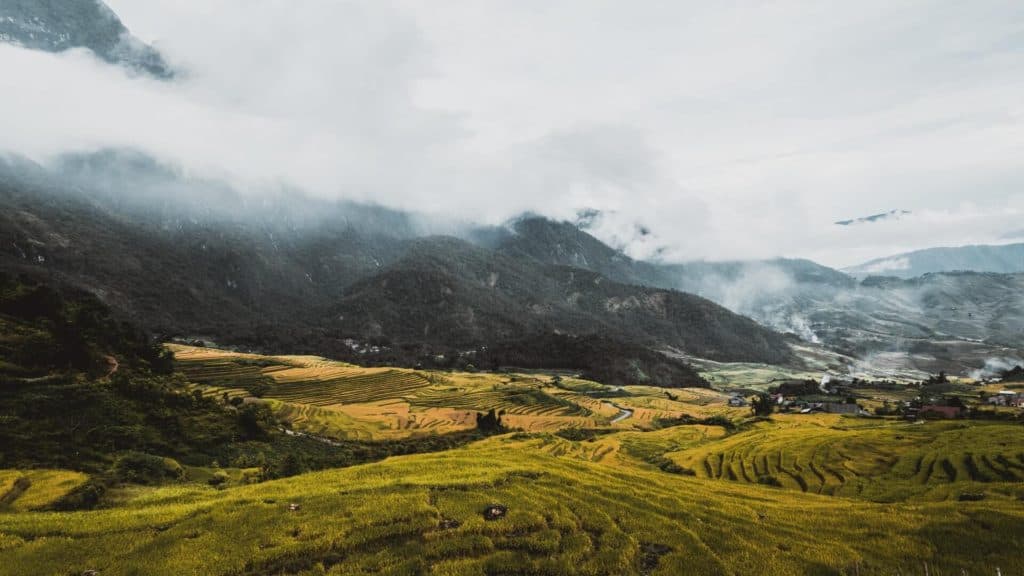Located in the northern mountains of Vietnam, Sapa is home to visually stunning rice terraces, serene mountainous views and local minority indigenous tribes.
Sapa rice fields are among the unmissable highlights in this rustic town, attracting tourists around the world all year long.
Make sure to read this detailed article until the end to learn more about Sapa terraces, the best time to visit, and useful tips to better plan your visit to one of the most beautiful rice fields in Vietnam.
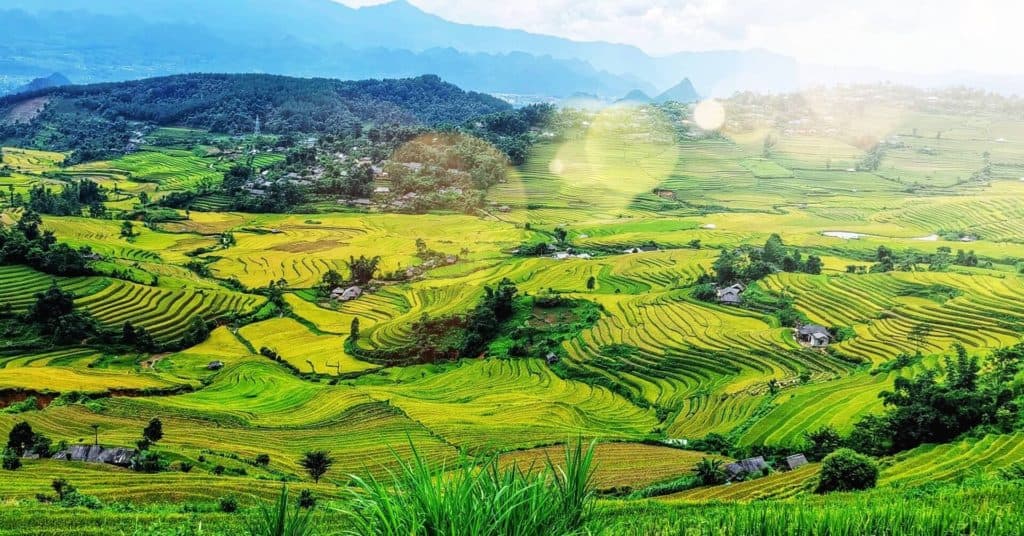
Disclaimer: Some of the links on here are affiliate links and I may earn if you click on them at no extra cost to you. Thank you.
What Are Terraced Rice Fields
According to World Atlas, terrace farming refers to the building of terraces on terrains with steep slopes and mountains for crop plantation—such as rice.
Terraced rice fields are commonly found in Asian countries, including Vietnam.
The terraces allow the water and nutrients to flow from one terrace to another via a system of small gates or openings, instead of flowing directly down the hill.
With this, the farmer can control the water flow, keeping different areas of the terraced rice paddies dry or wet at a time.
Rice Terraces Vietnam: Sapa
Sapa rice fields offer a chance to fellow visitors to unwind and get close to nature while experiencing an untainted, authentic way of living by the indigenous locals.
Most of the locals are dressed in their traditional costumes while carrying out day-to-day activities, including the hard-labour rice farming action.
Buffaloes are used to plough the land and the farmers harvest the rice through conventional method—by threshing them against a wooden platform to separate the grains from the husks.
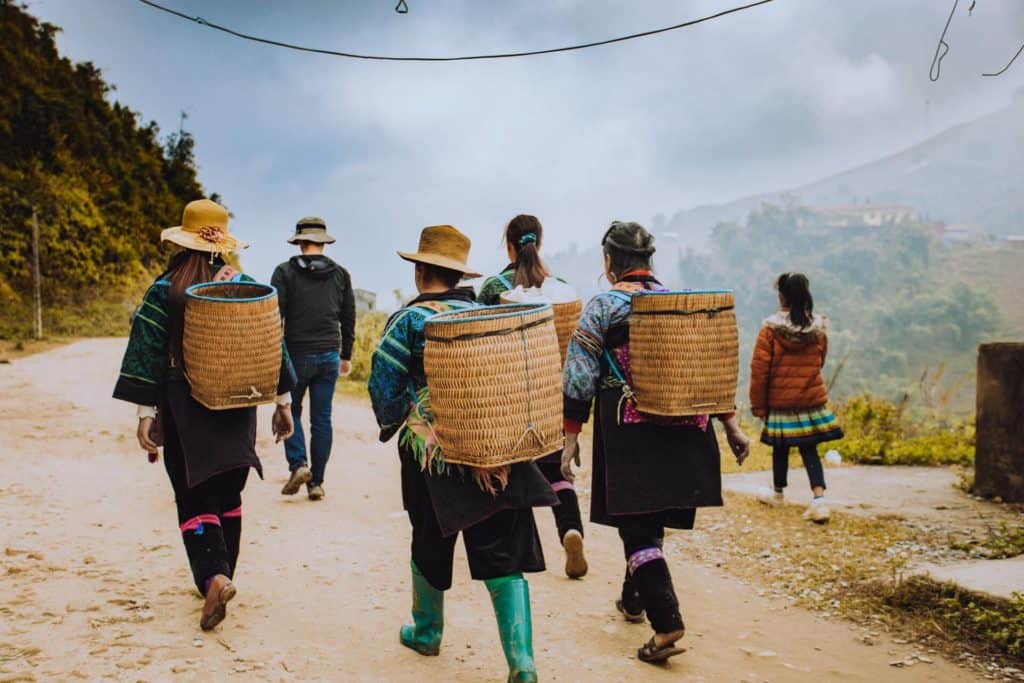
Where Can We Find Sapa Rice Paddies
Over the years, Sapa rice fields were built by several minority ethnic groups—Giay, Tay, Muong, and Dao.
Here are some of the popular rice paddies spots with jaw-dropping views around Sapa that you need to get to:
- Muong Hoa Valley (largest Sapa rice terraces)
- Vu Lung Sung Village (oldest rice paddies in Sapa)
- Y Ty Commune
There are 5 main villages in Muong Hoa Valley: Lao Chai Village, Y Linh Ho Village, Giang Ta Chai Village, Ta Van Village, and Ban Ho Village.
Among all, Ta Van Village and Ban Ho Village are the best places to be to view the picturesque rice fields.
Vu Lung Sung Village in Trung Chai Commune is also home to the highest number of rice field terraces with 121 steps, making the climb up the mountain to enjoy the panoramic rice fields views is totally worth it.
If you prefer non-touristy rice fields to soak in the spectacular scenery, then make your way to Y Ty Commune (about 70 kilometres from Sapa centre).
Located in high mountains, the commune is usually covered with clouds, making the rice terraces views are one-of-the-kind in Vietnam.
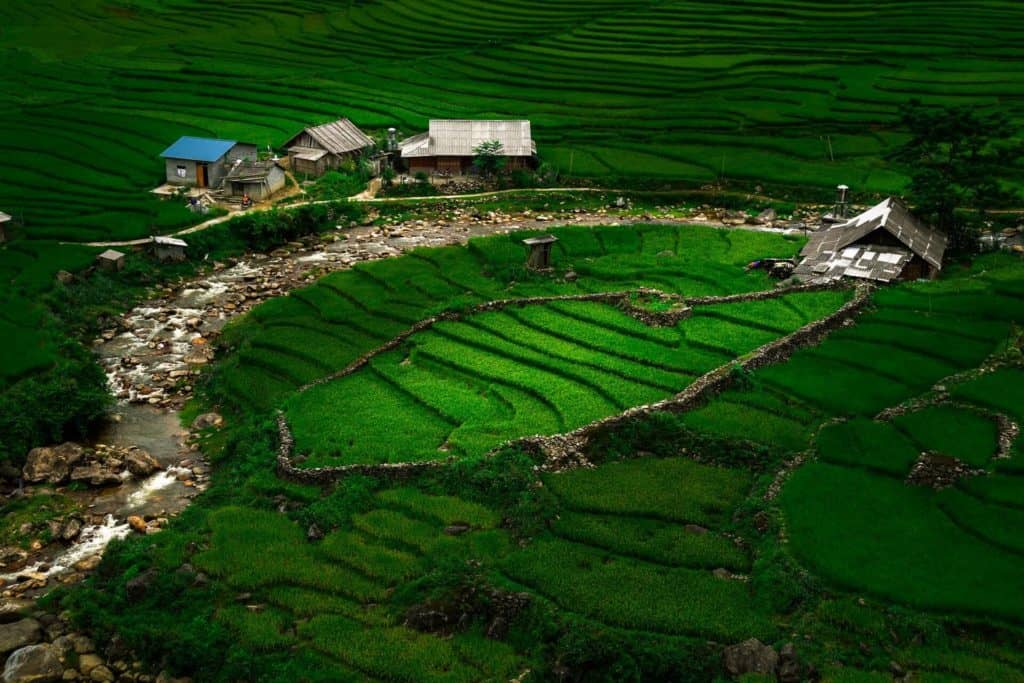
Trekking Activity In Sapa
One of the best ways to enjoy the spectacular views of rice terraces and mingle with locals of different villages is by joining a guided trekking tour in Sapa.
There are many Sapa trekking tour options available, depending on your preferred route, trekking level difficulty, and duration (number of day/s).
For overnight tours, visitors will have a chance to stay with local tribes at their homes so that they can experience and learn the locals’ way of living, culture and traditions.
And wake up the next morning to the sound of the farm animals with breathtaking rice fields scenery!
If you are keen to sign up for one, check out any of these highly recommended Sapa trekking tours:
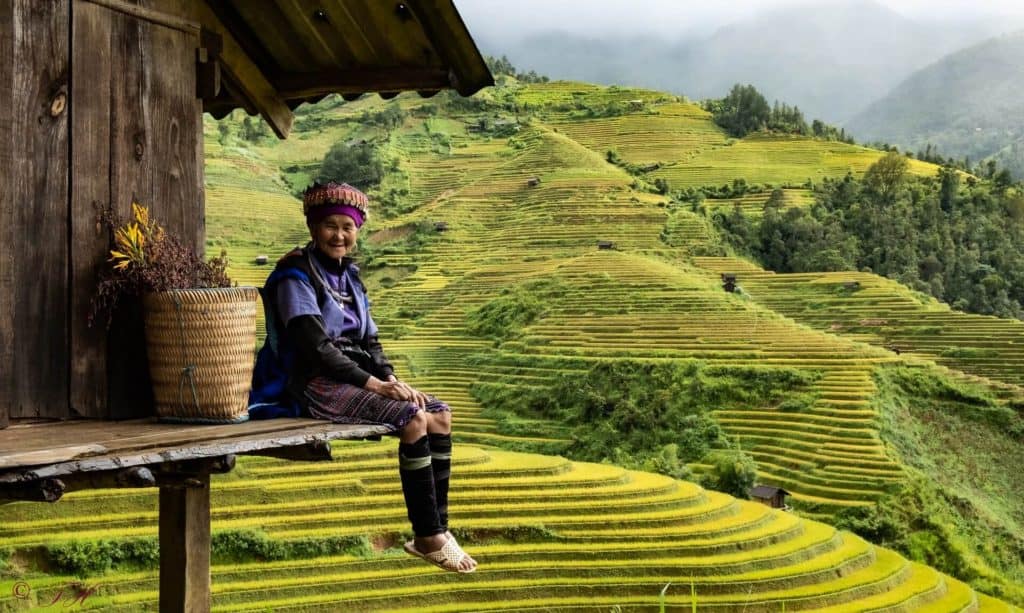
Alternatively, if you are adventurous enough and have a good sense of direction, you can explore Sapa on your own and bask in the dreamy view of Sapa rice terraces with lush green mountains as the backdrop.
Best Time To Visit Sapa Rice Terraces
Generally, you can visit Sapa rice terraces at any time of the year as each season shows different yet equally captivating panoramic scenery of the rice fields.
The best time to enjoy the most beautiful views of Sapa rice fields is in early September. During this autumn season, the rice paddies are in golden colour, signalling the commencement of the harvesting period.
Spring (March to May)
In spring, the weather in Sapa is dry and pleasant.
If you are planning to visit the rice fields during non-peak periods, this is the best time to do so.
From March to May, all the Sapa rice fields are filled with water where the farmers start new crop cultivation and planting cycle.
And when the sunlight reaches the water surface, the rice paddies look as if a giant mirror reflecting the blue sky and surrounding lush green mountains—offering a pleasant, relaxing view to visitors.
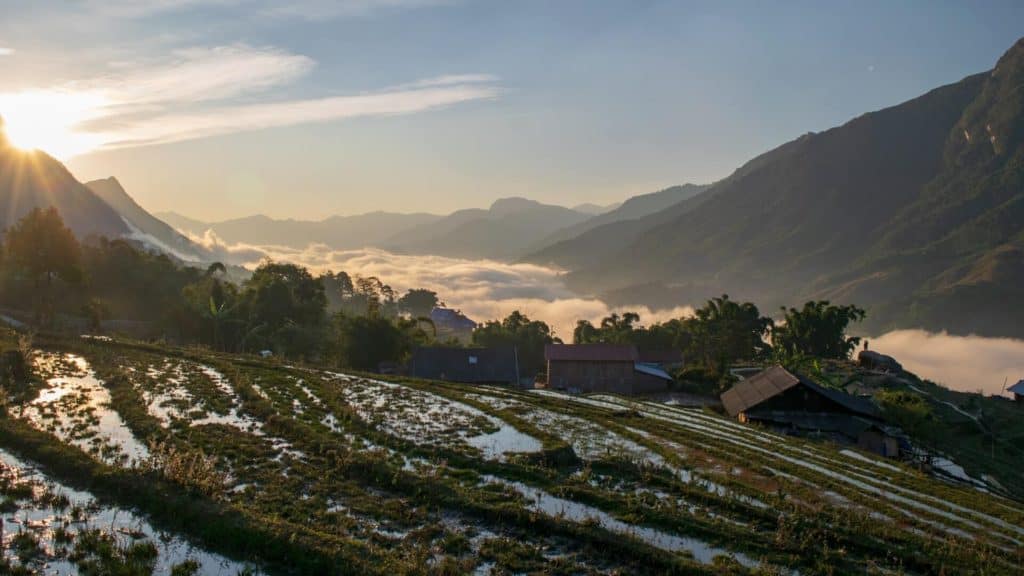
Summer (June to August)
In summer, the weather in Sapa is hot and humid.
Note: It is also a rainy season so make sure to bring along your raincoat before visiting.
Nevertheless, in these 3 months the rice terraces appear in eye-soothing green colour, offering astonishing scenic views that will leave you in awe.
Though it is hot and rainy, the summer season in Sapa is a peak travel period and attracts both domestic and international visitors to this lovely town to soak in the beautiful scenes of green rice paddies.
Autumn (September to November)
Autumn is another peak tourist season in Sapa, where the rice fields have turned into golden colour—turning the mountainous landscape into a mesmerising wonderland.
During these months, the weather is pleasant and ideal for rice paddies trekking activities.
The indigenous farmers will start harvesting the paddies from September to October so if you plan to admire the beautiful golden views of Sapa rice fields, make sure to reach the town in early September.
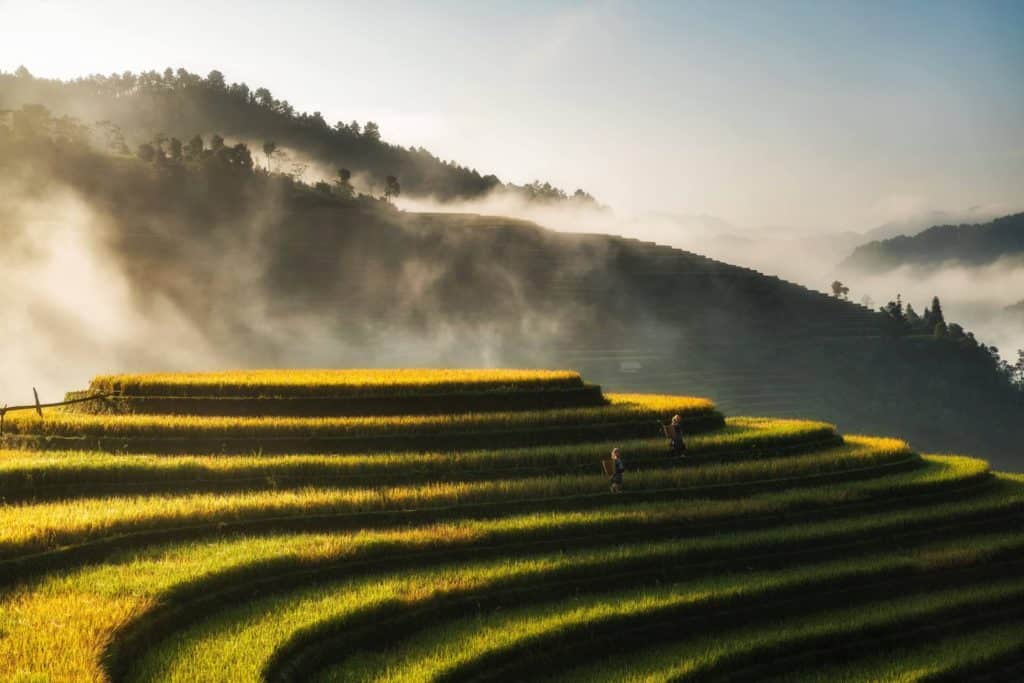
Winter (December to February)
Winter in Sapa can be harsh at times where the temperature can drop to as low as 5 degrees Celsius.
Sapa rice fields are also covered with fog during this season, giving rise to some dreamy, picturesque panoramic views of the mountainous landscape.
How To Get To Sapa
Sapa is located in the northern region of Vietnam; about 320 kilometres away from Hanoi, the capital city.
There are several ways to get to Sapa from Hanoi:
- By train
- By bus
- By private transfer or taxi
- By motorcycle
By Train
The most convenient, popular, and easiest way to get to Sapa is via train service. The travel journey will take about 8 hours to reach Lao Cai Railway Station.
As Sapa is also a popular domestic attraction, it is recommended to buy the train ticket at least 1 week in advance, especially on weekends or peak months. You can either get the ticket from the ticketing counter or a local travel agency.
The train ticket price varies depending on the ticket classes that you choose from, such as the type of train beds (soft or hard) and cabins (sharing or private).
Depending on your budget, you can get a ticket as cheap as US$18 (410 000 Vietnamese Dong/ VND) or a whopping US$100 (2.2 million VND) for the 8-hour ride!
After reaching Lao Cai, you will still need to board a shuttle bus from the railway station for an hour before reaching Sapa.
The usual fare for the shuttle bus ride costs around US$3 (50 000 VND).
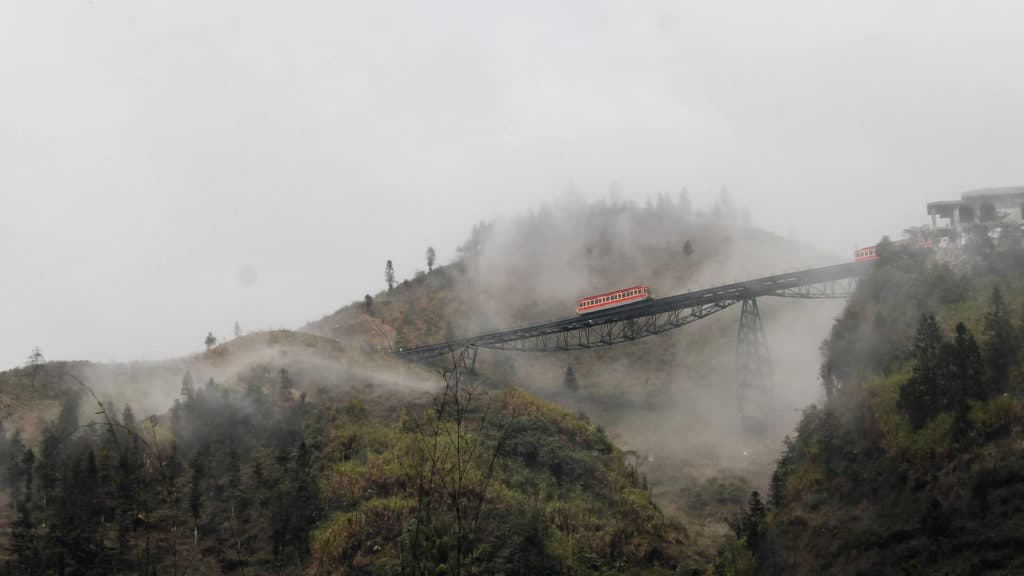
By Bus
For a more budget travel approach, you can consider boarding a 6-hour bus ride from Hanoi to Sapa.
A typical one-way bus ticket costs about US$10 (223 000 VND). For a premium bus, the ticket price can go up to US$20 (456 000 VND).
Nevertheless, the bus ride might not be as comfortable as the train cabin, especially for those who are tall or have a big-sized build due to crammier space.
The bus route towards Sapa is mountainous and windy—and so if road safety is your main priority, you might want to hop onto the train cabin instead.
By Private Transfer Or Taxi
Alternatively, you can get a private transfer or taxi to get to Sapa from Hanoi if you are travelling in a group or do not want to compromise on your comfort.
It takes about 5 hours to reach Sapa rice fields via this transportation mode, which is the shortest duration among all.
Being said that, the travel cost for a private vehicle starts at US$350 (8 million VND) depending on the group size and vehicle type.
Note: Make sure to bargain and reach an agreement on the price with the driver before getting into the vehicle.
By Motorcycle
If you are an experienced rider with a valid international driving license and prefer to enjoy the spectacular mountainous view en route to Sapa at your pace, then renting a motorcycle to get to Sapa might be a viable option.
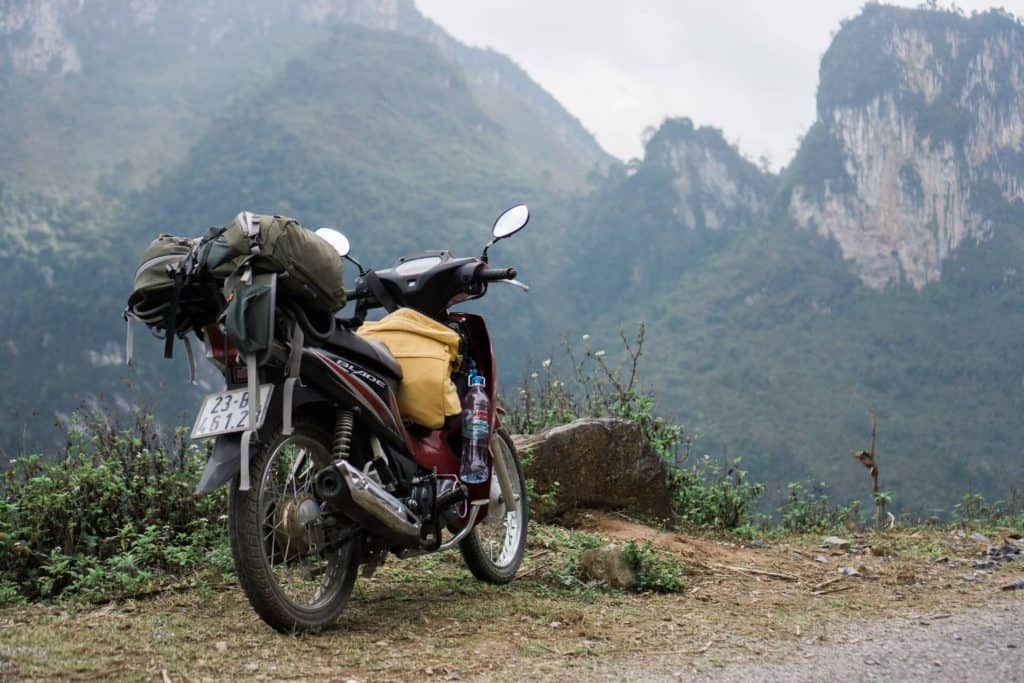
The travel duration from Hanoi by motorcycle will take about 10 hours so it is recommended to break it up into 2 days to ensure enough rest before continuing the windy road.
Note: Watch out for dogs and sharp turns along the mountainous road. Refrain yourself to ride the motorcycle at night due to poor visibility and cold conditions.
How Many Days Are Enough For Sapa
There is no doubt Sapa is a beautiful rural town, home to one of the most breathtaking rice fields in the country.
If you are on a tight schedule, you can stay in Sapa for 2 days to enjoy what this rustic town can offer to fellow urbanites.
Or if you are planning to immerse into the local culture, mingle with indigenous villagers, and admire the picturesque view of Sapa rice paddies at your pace, then it is recommended to stay at least 3 days in Sapa.
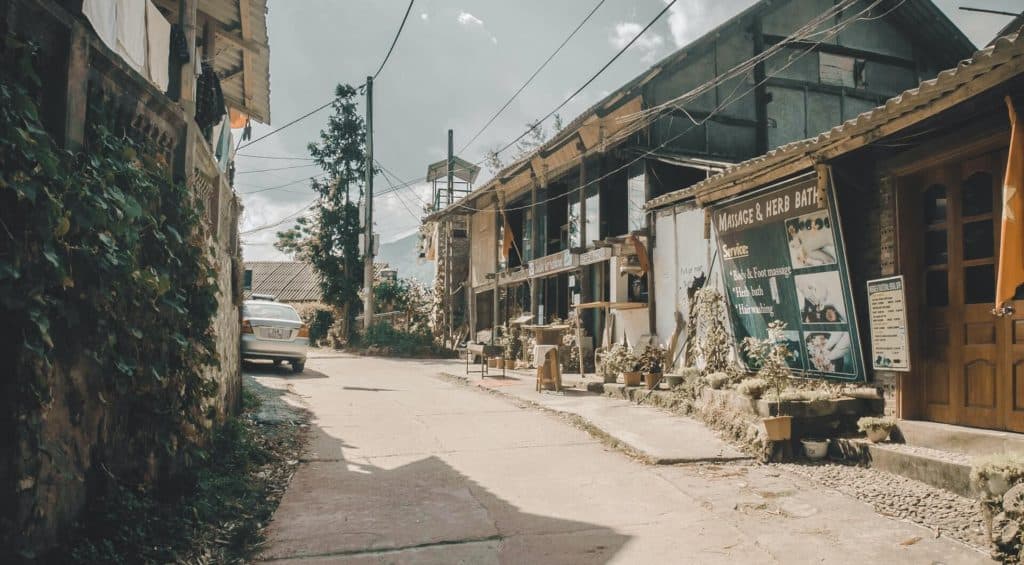
Where To Stay In Sapa
There are many different types of accommodations available in Sapa, depending on your budget and preferences.
Here are some of the recommended ones:
Budget: The Little Hmong House, La Beaute Sa Pa
Mid-range: D&D Eco Spa, Sapa Eco Villas & Spa
Luxury: Eco Palms House, Hotel de la Coupole
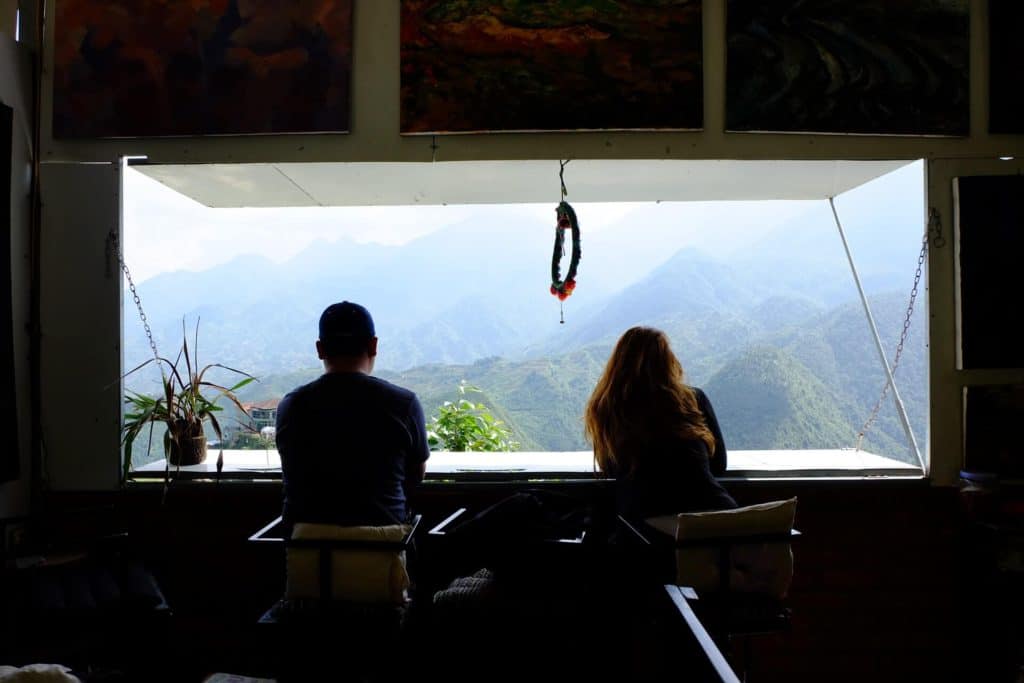
Unique Tips You Should Know Before Travelling To Sapa
Make sure to read all these tips so that you can have the best of your time in Sapa:
Bringing Cash To Sapa
ATMs might not be as commonly found as Sapa is a small rustic town.
Therefore, remember to bring cash consisting of small notes (both VND and USD) before leaving any major city in Vietnam.
Get Your Train Transfer To Sapa Sorted In Advance
If you choose to get to Sapa from Hanoi via train service, make sure to book the ticket in advance especially travelling on weekends or during peak months.
Being the most popular transportation mode to Sapa among visitors, the train tickets can be sold out within a short period and you will have to look for other alternatives.
Touting Issue
Sapa has a serious touting issue, especially among the Hmong women and children.
If you are not keen to buy the items or souvenirs, firmly reject the seller and walk away—though some persistent ones might be following you around for a while to continue the selling.
Getting A Trekking Guide
Getting a trekking guide is recommended, especially if this is your first time exploring Sapa rice paddies.
To have peace of mind, you can always sign up for Get Your Guide Sapa tours for experienced trekking guides guiding you along the journey.
Alternatively, you can inquire more about available trekking tours from Sapa Tourist Information Centre and sign up for one upon arrival.
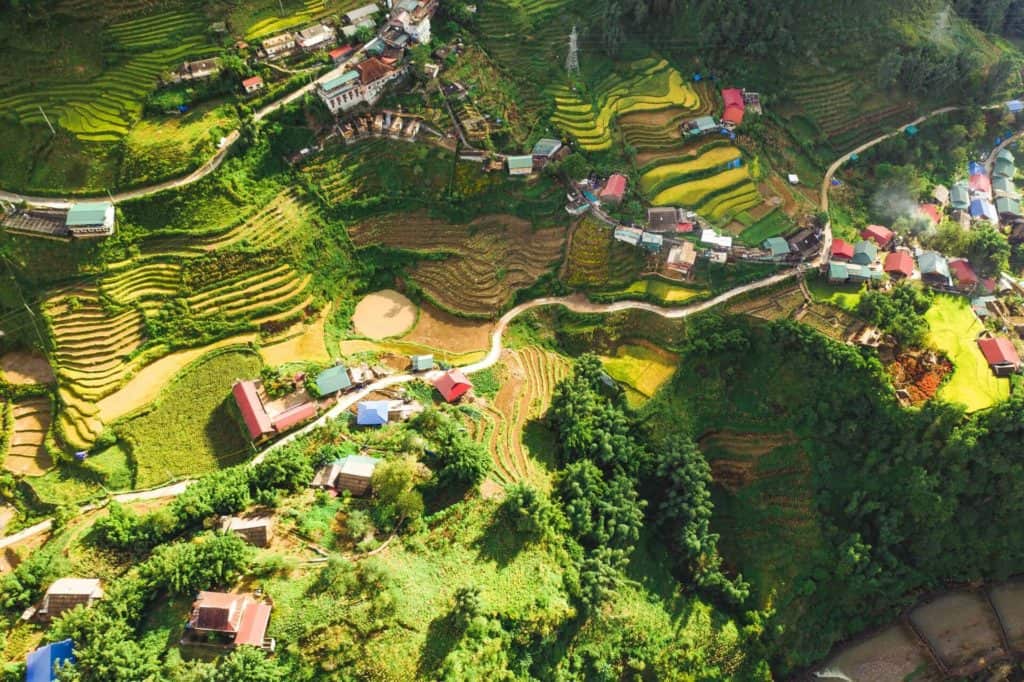
Pack Lightly For Trekking
If you sign up for any Sapa rice fields trekking tour, make sure to pack lightly before leaving your hotel.
Bring only important trekking gears and stuff so that you can channel more energy to admire the breathtaking rice terraces view and have an enriching travel experience!
Travel Insurance
Getting travel insurance before visiting Sapa is unnegotiable! Get yourself insured with World Nomads.
Disclaimer: World Nomads provides travel insurance for travelers in over 100 countries. As an affiliate, we receive a fee when you get a quote from World Nomads using this link. We do not represent World Nomads. This is information only and not a recommendation to buy travel insurance.
Sapa Rice Paddies: Packing List For Trekking
Here are some important items that you need to pack for your Sapa rice fields trekking trip:
- Small money notes (VND and USD)
- Reusable water bottle
- Insect repellent
- Sturdy hiking shoes
- Portable charger
- Camera
- Raincoat
- Snacks/Canned food
- Personal medication
Sapa Rice Fields: Conclusion
Sapa rice fields are among the best rice fields that you can ever visit in the Asia region—offering picturesque rice paddies views and a unique glimpse into the local indigenous people’s lifestyle and culture that have been preserved and passed down from one generation to another over the past centuries.
If you find this article useful, I would be glad if you could share it with your friends or family members who are planning an itinerary to visit Sapa rice terraces!
Hãy tận hưởng kỳ nghỉ của bạn!

Sam Lee, founder of Sam Lee Travel, is a seasoned traveler with over 10 years of experience exploring various Asian countries. Having lived in Singapore for almost a decade, Sam has developed a deep understanding of the culture, customs, and attractions in the region.
With a passion for outdoor travel adventures and water sports, Sam has helped over 25K readers per month plan their trips around Asia, including off-the-beaten-path destinations, offering helpful travel tips and unfiltered personal travel experience.
